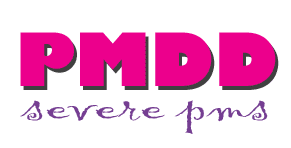Premenstrual Dysphoric Disorder
Premenstrual dysphoric disorder (PMDD) is a severe, sometimes disabling extension of premenstrual syndrome (PMS). Although regular PMS and PMDD both have physical and emotional symptoms, PMDD causes extreme mood shifts that can disrupt your work and damage your relationships.
In both PMDD and PMS, symptoms usually begin seven to 10 days before your period starts and continue for the first few days that you have your period. Both PMDD and PMS may also cause bloating, breast tenderness, fatigue, and changes in sleep and eating habits. In PMDD, however, at least one of these emotional and behavioral symptoms stands out:

- Sadness or hopelessness
- Anxiety or tension
- Extreme moodiness
- Marked irritability or anger
The cause of PMDD isn’t clear. Underlying depression and anxiety are common in both PMS and PMDD, so it’s possible that the hormonal changes that trigger a menstrual period worsen the symptoms of mood disorders.
Treatment of PMDD is directed at preventing or minimizing symptoms and may include:
Antidepressants. Selective serotonin reuptake inhibitors (SSRIs), such as fluoxetine (Prozac, Sarafem, others) and sertraline (Zoloft), may reduce symptoms such as emotional symptoms, fatigue, food cravings and sleep problems. You can reduce symptoms of PMDD by taking SSRIs all month or only in the interval between ovulation and the start of your period.
Birth control pills. Taking birth control pills with no pill-free interval or with a shortened pill-free interval may reduce PMS and PMDD symptoms for some women.
Nutritional supplements. Consuming 1,200 milligrams of dietary and supplemental calcium daily may possibly reduce symptoms of PMS and PMDD in some women. Vitamin B-6, magnesium and L-tryptophan also may help, but talk with your doctor for advice before taking any supplements.
Herbal remedies. Some research suggests that chasteberry (Vitex agnus-castus) may possibly reduce irritability, mood swings, breast tenderness, swelling, cramps and food cravings associated with PMDD, but more research is needed. The Food and Drug Administration doesn’t regulate herbal supplements, so talk with your doctor before trying one.
Diet and lifestyle changes. Regular exercise often reduces premenstrual symptoms. Cutting back caffeine, avoiding alcohol and stopping smoking may ease symptoms, too. Getting enough sleep and using relaxation techniques, such as mindfulness, meditation and yoga, also may help. Avoid stressful and emotional triggers, such as arguments over financial issues or relationship problems, whenever possible.
Review your symptoms with your doctor. A thorough medical evaluation may determine if symptoms are due to PMDD or some other condition. If you’re diagnosed with PMDD, your doctor can recommend specific treatments to help minimize symptoms.

